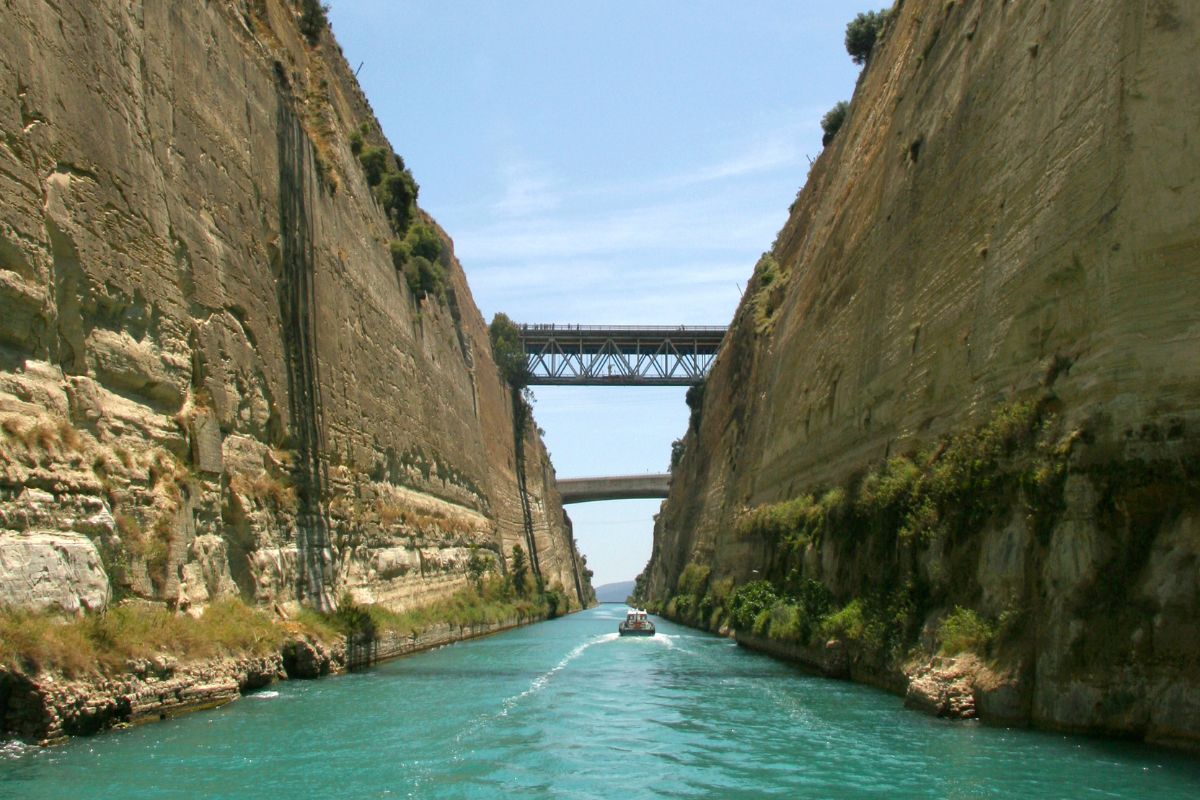Corinth Canal stands as a testament to human ingenuity and engineering mastery. This narrow strip of waterway located in Greece connects the Gulf of Corinth with the Saronic Gulf in the Aegean Sea. It serves as a vital transportation route, significantly reducing the travel distance between the Ionian and Aegean seas. Spanning a length of approximately 6.4 kilometers, the canal cuts through the narrow Isthmus of Corinth, providing a direct route for ships traveling between the western and eastern regions of Greece.
The concept of a canal through the Isthmus of Corinth dates back to ancient times. Various rulers and civilizations, including the Roman emperors Nero and Caligula, considered and even attempted the construction of a canal at this strategic location. However, due to technical limitations and the daunting task of excavating through solid rock, these early endeavors were unsuccessful.
It wasn’t until the late 19th century that the idea of building the canal resurfaced. In 1881, after several failed attempts by different nations and private enterprises, Greece finally undertook the ambitious project. French engineers who had experience in constructing the Suez Canal were commissioned for the task. The construction officially began in 1882 and required nearly 11,000 laborers to complete the excavations.
The construction of the Corinth Canal presented a unique set of challenges. The canal had to be carved directly through the Isthmus of Corinth, which consisted of solid rock ranging from 60 to 90 meters in depth. Engineers utilized a combination of explosives, drills, and manual labor to excavate the canal. The project also faced financial difficulties, changing political landscapes, and engineering setbacks, which led to delays in its completion.
Finally, on July 25, 1893, after more than a decade of strenuous labor and perseverance, the Corinth Canal was officially opened to maritime traffic. The completion of the canal marked a significant achievement in modern engineering and provided a crucial link for international shipping. The canal’s narrow width of only 25 meters posed navigational challenges for larger vessels, resulting in restrictions on the types of ships that could pass through.
Despite its narrow width, the Corinth Canal has served an important role in maritime trade and tourism. The canal’s stunning cliffs, reaching up to 90 meters in height, attract thousands of visitors each year. Tourists can witness ships passing through the narrow canal, creating a spectacular sight as they navigate the tight waterway.
In addition to its navigational significance, the Corinth Canal has also become a hub for various extreme sports and events. Bungee jumping, in particular, has gained popularity at the canal, with thrill-seekers taking the plunge from the bridge that spans the waterway. The canal’s scenic location and unique characteristics have made it a popular destination for adventurers and tourists alike.
In conclusion, the Corinth Canal stands as a remarkable feat of engineering that has withstood the test of time. From its ancient origins to its modern-day significance, the canal continues to be a symbol of human innovation and determination. As ships continue to traverse its narrow waters, the Corinth Canal remains a testament to the enduring legacy of those who dared to conquer the seas through rock and resolve.




